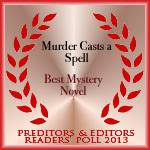Steinbeck’s #” The Moon is Down” is a must read for anyone who has an interest in the World War II Nazi occupation of towns in countries like Norway, Italy and France. Steinbeck wrote this novel in response to the U.S. government’s request that he write a propaganda novel. He set his story in a fictitious city invaded by an unnamed enemy. Clearly his invaders were Germans. Steinbeck explored the occupation from the perspectives of both the invaders and the invaded. The result is an in-depth examination of the psychological and emotional impact enemy occupation has on all people involved. The book was an instant hit in Europe and purportedly aided the healing process after the end of the war because the victims believed Steinbeck expressed the true agony of occupation. Though written in the 1942, “The Moon is Down” is written in an ageless style that will suit modern-day tastes.
The Moon is Down” is a must read for anyone who has an interest in the World War II Nazi occupation of towns in countries like Norway, Italy and France. Steinbeck wrote this novel in response to the U.S. government’s request that he write a propaganda novel. He set his story in a fictitious city invaded by an unnamed enemy. Clearly his invaders were Germans. Steinbeck explored the occupation from the perspectives of both the invaders and the invaded. The result is an in-depth examination of the psychological and emotional impact enemy occupation has on all people involved. The book was an instant hit in Europe and purportedly aided the healing process after the end of the war because the victims believed Steinbeck expressed the true agony of occupation. Though written in the 1942, “The Moon is Down” is written in an ageless style that will suit modern-day tastes.
Posted by: nancycurteman | April 29, 2013
“The Moon is Down” A Must Read
Posted in Novels, Popular Authors | Tags: Germans, great reads, John Steinbeck, Nazis, novels, occupation, propaganda, war, World War II
Responses
Leave a comment Cancel reply
Categories
- Africa
- America
- Animals in Mystery novels
- Asia
- Australia
- Blogging tips
- Canada
- character development
- character interviews
- Characterization
- clear and concise writing
- Click Languages
- Clothing in Novels
- Comma Rules
- e-book format problems
- Edith Piaf
- Education
- Europe
- First Drafts
- Fisherman's Wharf
- Flash Fiction
- Format Your Novel
- Glens of Antrim
- Global Mysteries
- Global Mysteries: Travel the World in Mysteries
- How schools keep students safe
- How to add a poll to your blog.
- How to add twists to your mystery novel
- How to Conquer Writers' Block
- how to edit
- How to Foreshadow
- How to use clothing to develop characters
- How to write a mystery
- how to write backstory
- How to write character
- How to write character emotions
- How to Write Description
- How to write dialogue
- How to Write Minor Characters
- How to Write Novel Endings
- How to Write Novels
- How to write pacing
- how to write plot
- how to write scenes
- How to write setting
- How to Write Story Resolution
- How to write the middle of novels
- Hugh Jackman
- Humor in mystery novels
- Hw to Write Plot
- Hw to write setting
- Improve your Health
- Improve your Writing
- Ireland
- Lethal Lesson
- Market your Novel
- murder
- Murder Casts a Spell
- North America
- Northern Ireland
- Overwriting
- Pacing
- Peasant food
- Plants as weapons in mystery novels
- Poland
- Popular Novels and Authors
- Practice brevity in writing
- Publishing
- Readers Polls
- research
- Research for novels
- Russia
- Sexual Harassment of Boys
- Social Media
- Spain
- subplots
- The Bahamas
- The classics can inspire writing
- Travel
- Travel Mysteries
- Uncategorized
- UNESCO World Heritage Sites
- United Kingdom
- United States
- Vikings
- writers' block
- Writing and Writers
- Writing Awards
- Writing Craft
- writing is rewriting
- Writing strategies











I love Steinbeck, but I have not read this one. Thanks to you suggestion I will definitely look for it. I love reading about the WWII period, and set my book “Lydia’s Story” in that time period. Thanks again for bringing “The Moon is Down” to my attention.
LikeLike
By: headywriting19 on April 29, 2013
at 4:15 pm
Lydia’s Story sounds interesting. Does it take place in an occupied city?
LikeLike
By: nancycurteman on April 29, 2013
at 6:40 pm
I’ll be honest and say the book holds no appeal for me. But I expect that there are many readers who would be interested in the topic, especially by Steinbeck.
LikeLike
By: nrhatch on April 29, 2013
at 5:31 pm
The book is a bit different than Steinbeck’s typical subject choices.
LikeLike
By: nancycurteman on April 29, 2013
at 6:42 pm
My son found a first edition of this book at a garage sale and gave it to me to add to my collection. It is very different from other books by Steinbeck. Images from parts of the book are vivid in my mind long after reading it.
LikeLike
By: An Embarrassment of Freedom on April 30, 2013
at 7:34 am
The images in Steinbeck’s book impacted me in the same way they did you. I could not put the book down and I still think about it. How exciting that you son found a first edition. I think it’s a treasure and worth a considerable amount of money. Thanks for sharing your thoughts about the book.
LikeLike
By: Nancy Curteman on May 2, 2013
at 10:03 am
I’m curious about your comment that this book, “purportedly aided the healing process after the end of the war because the victims believed Steinbeck expressed the true agony of occupation.” I’ve never read that before and would be grateful to learn where you came across references to it. Thanks!
LikeLike
By: David Lee on May 12, 2013
at 1:11 am
Check out this website for further information on the reception “The Moon is Down” received. http://as.sjsu.edu/steinbeck/teaching_steinbeck/index.jsp?val=teaching_the_moon_is_down_reception
LikeLike
By: Nancy Curteman on May 12, 2013
at 6:29 pm
Thank you for the link to that fine discussion of the American reception of Steinbeck’s book. It does not, however, discuss the book having aided the healing process after the War. Do you have a citation or link for that?
LikeLike
By: David Lee on May 12, 2013
at 11:56 pm
Hello David,
It has taken me some time to relocate my research sites, but here are a couple of my reference urls. I hope these are helpful.
jhu.edu/journals/steinbeck_review/summary/v003/3.2.forster.html
classiclit.about.com/od/steinbeck/fr/ag_jstein3htm
LikeLike
By: nancycurteman on May 13, 2013
at 12:24 pm
Hi David,
I’m so sorry I can’t be of more help. I will keep searching for the citation link as I do my postings. I hope I can find it for you.
Best, Nancy Curteman nancycurteman@yahoo.com
LikeLike
By: nancycurteman on May 14, 2013
at 9:25 am
By: Anonymous on May 12, 2013
at 6:26 pm
Dear Nancy,
Many thanks for digging those up! The Forster review article is only available in part online, but that doesn’t mention the book having aided the healing process after the War. I will track it down. The ClassicIt site is just a summary of the book with no research content.
I’ve been working on The Moon Is Down for some time and have never come across a mention of the book having aided the healing process after the War. I’m pretty certain Coers makes no mention of this. I wish it were true, but I fear most Europeans were exhausted by war and still rather angry with the Germans – Nazis or otherwise – for having ravaged the continent. If you have any other information on this I would be most grateful. If not, thank you for an intriguing thread to follow.
Best,
David
LikeLike
By: David Lee on May 13, 2013
at 1:38 pm
David,
It’s so interesting that you’re researching The Moon is Down. Did you read the section in which the book was used by resistance groups? How about the section in which the King of Norway awarded Steinbeck for his work. In my research I gleaned that Northern Europeans in occupied towns and villages believed Steinbeck demonstrated understanding of what they were going through. I wonder if there wasn’t some small satisfaction to know that Steinbeck saw that the occupiers may have suffered from the resistance efforts of the occupied villages�some feeling that the resistance effort did something. Of course, no one forgives the Nazis for what they did. It was and will always be unforgivable.
Good luck in your research.
Nancy Curteman nancycurteman@yahoo.com
LikeLike
By: nancycurteman on May 13, 2013
at 1:55 pm